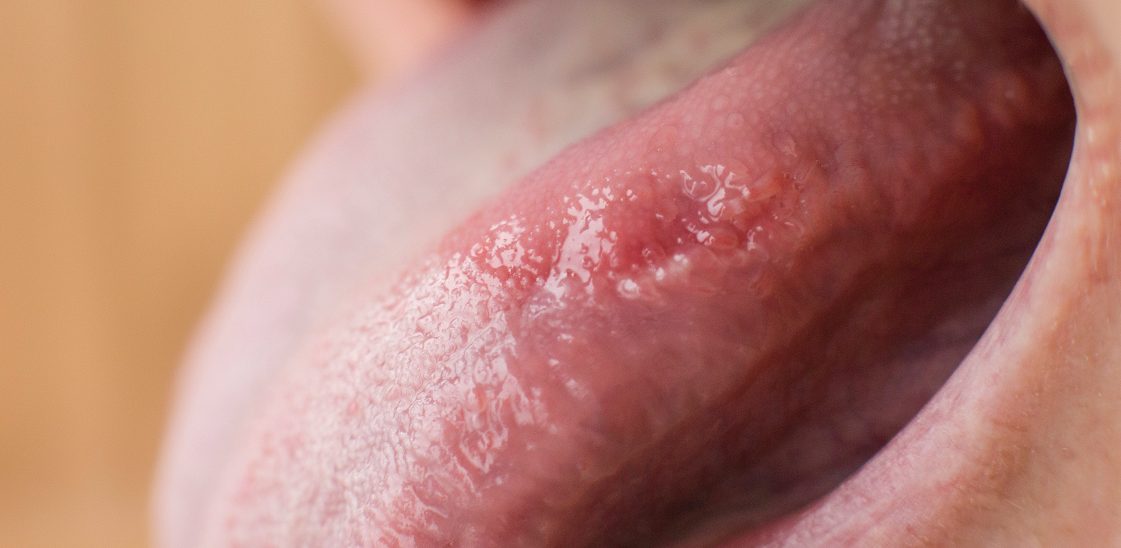
What does leukoplakia look like?
Leukoplakia is usually harmless and it often goes away on its own – but what does it look like, and what are the symptoms of this condition? In this article, DenTek takes a closer look at this condition, explaining how you can establish if you have leukoplakia and what you can do about it.
What are the symptoms of leukoplakia?
The main symptom of leukoplakia is visible patches in the mouth. The patches often appear on the tongue, but they can also develop on the inside of the cheeks and on the gums. It’s also possible to have patches on the roof or floor of the mouth under the tongue.
The patches are usually white in colour, but they may also be slightly red. They often vary in size, and they take irregular shapes. Leukoplakia patches can be raised too.
There is another form of this condition called hairy leukoplakia. It is caused by the Epstein-Barr virus – a common and highly contagious virus that can cause other illnesses such as glandular fever. You may have hairy leukoplakia if the patches are fuzzy, or they look folded or ridged.
A healthy tongue should look pink and moist. It should be covered in small, natural bumps called papilla which cover the majority of the tongue’s upper surface. You can maintain a clean, healthy tongue by cleaning it as part of your everyday dental regime. You can do this by simply using the bristles of your toothbrush, or you could use a specially designed tool such as the DenTek Orabrush Tongue Cleaner which features ultra-soft, micro-pointed bristles that are designed to reach deep into the uneven crevices of the tongue to loosen bacteria. Doing this will not only keep your tongue clean and reduce your risk of developing problems like leukoplakia, it can help keep bad breath at bay too[1].
Is leukoplakia painful?
Fortunately, leukoplakia is not painful. You should find that the patches themselves do not cause any discomfort. In fact, the condition may go unnoticed for a while before you realise the patches are there.
However, even though leukoplakia is not painful, it doesn’t necessarily mean you should ignore it. If you have leukoplakia, there is a very slight risk that it could progress to mouth cancer. So, if the white patches have not gone away after two weeks, it’s important that you speak to your dentist or GP. It’s especially important to seek medical advice if you have a weakened immune system, such as if you’ve had an organ transplant, or if you have HIV.
Your dentist or GP will be able to examine the patches to establish if it is leukoplakia or something else, such as a fungal mouth infection like thrush. You may be referred to a specialist for biopsy testing. This is when a small piece of tissue from the affected area is removed for further checks[1].
Can leukoplakia be scraped off?
Leukoplakia cannot be scraped off, or brushed away. If you discover that the patches do start to come away, it could be that you have a different type of infection, like oral thrush, rather than leukoplakia.
This condition does not always require treatment, and you may find that the patches get smaller or go away by themselves if you adopt healthy habits, such as reducing your alcohol intake or giving up smoking. In the UK, this condition is mostly caused by smoking. Your dentist or GP may request that you have regular check-ups to ensure that the patches are not getting bigger.
In some cases, an operation is required to remove the patches if there is a risk of them becoming cancerous. This is usually carried out by numbing the area with a local anaesthetic, or it can be performed while you’re asleep under general anaesthetic. The leukoplakia patches are then removed using a surgical scalpel or a laser. The recovery time for such a procedure is short, and you should find that you heal quickly[1].
Resources:




